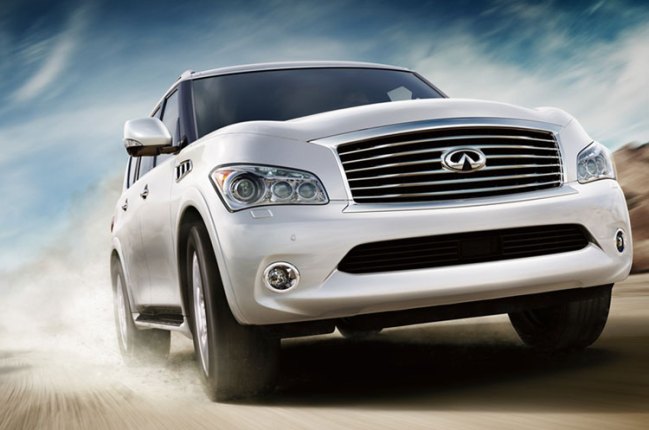
Summer is just about a month away, and in some parts of the country, winter just ended – finally. For taking a family vacation in the mountains, or screaming down some remote interstate in Nevada, these brand new vehicles provide some interesting tech features (like true surround sound for in-car movies), good fuel economy, and something extra to make the trip more enjoyable. We put them to the test in real-world conditions to find out how they fared for actual miles per gallon, and whether they lived up to the claims of the auto manufacturer in terms of seating space and tech features.
Overall winner: 2011 Chevy Tahoe Hybrid, $51,145

Not only did we test the Tahoe Hybrid on the longest trip, driving all the way to the Black Hills of South Dakota and back from Minneapolis, but we were most impressed with the vehicle’s fuel economy (for its size) and tech features. The 2011 model we tested is a full hybrid in that it has a 332-horsepower V8 gas engine and two electric motors.
On the highway, we locked in cruise control at 80MPH still and managed to get about 20MPG. More importantly, once we arrived at Custer State Park and took the 18-mile wilderness loop, the Tahoe Hybrid actually ran mostly on the electric engines at about 20-25MPG and barely used any fuel. In fact, the range indicator started at 410 miles to go and, when we were done with the loop, was actually higher, at 413. (We also rarely used the brakes and took advantage of the hills by coasting frequently.)
For tech amenities, the Tahoe Hybrid has a large, fold-down 7-inch screen for viewing movies. (The driver and front passenger can only watch on the front touchscreen when the car is stopped.) The surround-sound is amazingly good – in Spiderman 3, the audio whooshed around the cab from the 9-speaker Bose system. Seating in the Hybrid gets a bit cramped when you fill it to its eight-person capacity. The main issue is that the rear cargo area is only big enough for a few duffel bags turned on their sides, so we fit seven people and used the extra seating space for a cooler.
Best luxury ride: 2011 Infiniti QX56, $58,700

Here’s the vehicle you want for the best safety, the most interior space, and for high-end tech features. Granted, the price is about three times that of the Kia Optima. Yet, this was the hardest vehicle to give back after our test driving from Chicago to Detroit and back. One reason is that you can see so much from inside the vehicle. The QX56 stands about 6.3-feet tall, towering over other SUVs. Inside, there’s 40-inches of headroom in the front seat and 41-inches of legroom in the rear seats. In the back, there’s enough room for several duffel bags – more than the Tahoe Hybrid. The effect is that you feel like you are in a fish bowl (in a good way) and can see everything around you.
The QX56 is outfitted with all of the latest Infiniti safety features. Blind-spot detection tells you when a car is passing you on the highway or around town; adaptive cruise control gracefully slows the car when the vehicle in front of you slows down; and lane departure prevention that nudges you back into your lane by applying slight pressure on the side brakes. These features are incredibly useful on a long drive because they help you track your surroundings and can prevent an accident.
The QX56 has an 8-inch touchscreen with subtle long-drive features. For example, we set the QX56 to avoid toll roads and find the shortest route, and ended up shaving off some time from the trip and saving on the toll fees in Chicago. You can even control the audio level of alerts and the navigation voice independently. The 400-horsepower, 32-valve V8 engine provided some extra power for passing other cars, not something that is too common in recent full-size SUV. It meant we could swerve in and out of traffic without feeling too much like we were in a high-speed tank.
Best fuel economy: 2011 Kia Optima EX, $22,495

It’s rare when a vehicle slowly goes from a bad first impression to something that outclasses the competition. One reason the Optima seemed like a letdown (other than having previously tested a Volvo S60) was that the pictures at Kia.com made us think the styling was small and too much like a bent arrow, so we were already incredulous. And, like the Hyundai Sonata Turbo we tested recently, the Optima feels a bit low to the ground. In person, the Optima styling is actually more like a BMW 5-Series and, at just over 190 inches long, is actually larger than we imagined. For road trips, the 34MPG rating for fuel economy is the most important spec. Even with some erratic driving on a trip around Northern Minnesota we maintained about 30MPG. The vehicle felt heavy during our drive, and actually weighs about 3200 pounds, but uses some adaptive suspension technology that, while not exactly as fluid as the Audi A8, does make cornering a bit smoother. Also like the Sorento, the Optima has a dedicated 30-pin hook-up for an Apple iPod Touch or iPhone and it worked reliably. The connector is positioned just below the stereo in a compact space that keeps your device from falling out while you are driving or getting in the way, since you are controlling it through the stereo anyway.
Most fun to drive: 2011 Dodge Charger Hemi, $30,170

You might wonder if a powerful muscle car is really the right choice for a summer roadtrip. After all, the classic styling suggests a gas-guzzling behemoth. For the 2011 model, Dodge managed to give the 370-horsepower Hemi model some extra torque, but also managed to keep the fuel economy in line with the V6 versions – or right around 25MPG for highway driving. In our test, we drove around Detroit and headed northwest to Milford, Michigan where the country roads and tree-tipped horizons are perfect for some mock drag racing. The Charger is not exactly a sports car, and is meant to remind drivers of a 70s muscle car, but the 395 lb-ft torque rating is actually higher than the 2012 Ford Mustang Boss, which has about 440-horespower and 380 lb-ft of torque. So what does that really mean for your vacation? The Charger blasts off the starting line with a snapping force as if you pressed the nitro button, so every time you accelerate from a stoplight to highway speeds will be surprisingly fast. However, around corners, the Charger is a bit heavy and sluggish. Tech features in the 2011 Charger were also impressive. There’s a huge 8.4-inch touchscreen that supports Uconnect for your Bluetooth phone, and the Charger has a USB port for your MP3 player. In all, our driving around Milford gave as a solid 20MPG rating, mostly due to frequent fast acceleration tests.


